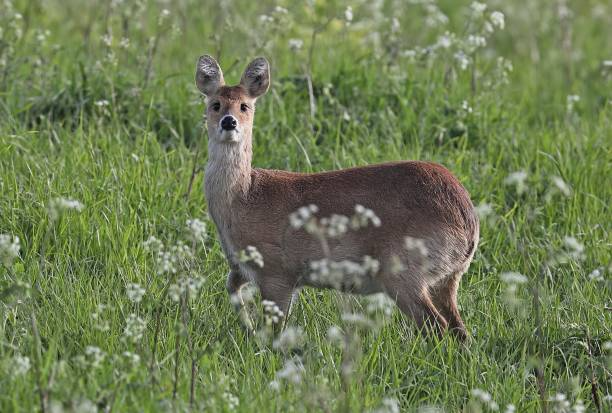Table of Contents
Scientific Classification
| Kingdom | Animalia |
| Phylum | Chordata |
| Class | Mammalia |
| Order | Artiodactyla |
| Family | Cervidae |
| Genus | Hydropotes |
| Species | Hydropotes inermis |
| Scientific Name | Hydropotes inermis |
1. Description
The Chinese Water Deer (Hydropotes inermis) is truly a one-of-a-kind species. It breaks the mold of what we typically think of when we picture deer. For starters, it doesn’t have antlers, which is quite unusual among cervids. Instead, the males sport long, tusk-like upper canines, giving them a striking, almost vampire-like appearance that captivates wildlife lovers.
These little deer are quite compact, featuring sturdy bodies and relatively short legs. Adults usually weigh between 9 to 14 kilograms (20 to 31 pounds) and stand about 50 centimeters (20 inches) tall at the shoulder. Their fur is coarse and has a yellowish-brown hue in the summer, which shifts to a grayer tone in winter. This seasonal change helps them blend seamlessly into the reeds and grasslands they call home.
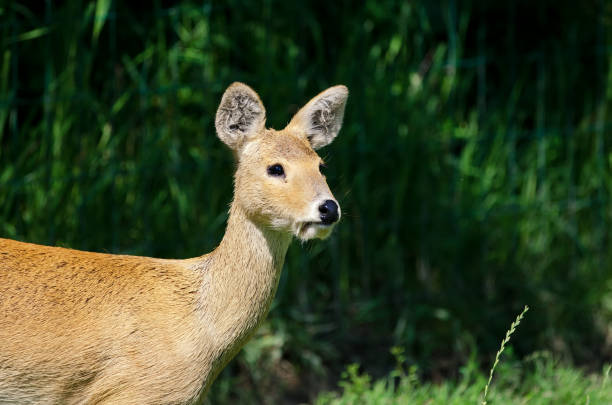
2. Distribution
The native range of the Chinese Water Deer includes:
- Eastern China (particularly along the Yangtze River basin)
- Korea
Due to introductions in the 19th and early 20th centuries, populations also now exist in:
- The United Kingdom (particularly Norfolk and Bedfordshire)
- France (though less established)
In China, their range has shrunk considerably due to habitat loss and human activity. In England, the population is thriving. Wild Chinese Water Deer now make up a significant part of the region’s wildlife.
3. Habitat
As their name implies, Chinese Water Deer are highly dependent on watery environments. Their ideal habitats include:
- Reed beds
- Swamps
- Riverbanks
- Marshy grasslands
- Agricultural fields (especially in areas adjacent to water)
They favor areas with thick, dense vegetation for cover and abundant food. These deer are shy and like to be alone. The tall grasses offer great hiding spots from predators and people.
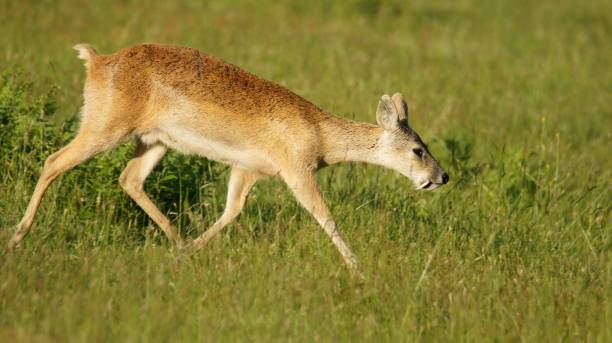
4. Diet
Chinese Water Deer are herbivores, feeding primarily on:
- Grasses
- Sedges
- Herbs
- Aquatic plants
- Agricultural crops (occasionally, particularly in the UK)
They mostly feed in the early morning and late evening. They often go into open areas when there are fewer people or predators around. Their feeding is methodical and they are known to clip plants close to the ground.
5. Behavior
The behavior of the Chinese Water Deer is all about being solitary and secretive:
Solitary Creatures: These deer prefer to go solo most of the time. They only come together during mating season or when a female is caring for her young.
Territorial Males: The bucks are quite the fighters, using scent glands on their faces to mark their territory. During the rut, they engage in fierce battles with their tusks.
Nocturnal Tendencies: While they aren’t strictly nocturnal, they tend to be most active at twilight, a behavior known as being crepuscular.
Great Swimmers: True to their name, these deer are excellent swimmers and can use waterways to escape from threats.
When it comes to communication, it’s pretty subtle. They mainly rely on body language and soft sounds like barks, squeals, or grunts.
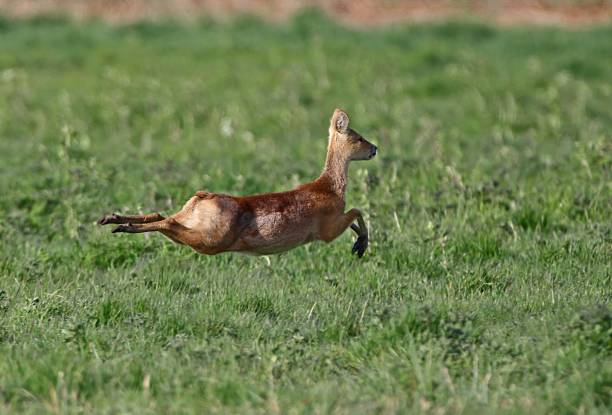
6. Lifespan
When it comes to the lifespan of a Chinese Water Deer, those living in the wild typically enjoy around 6 to 10 years. However, their longevity can be influenced by several factors, such as predators, loss of habitat, and interactions with humans. In contrast, when these deer are kept in captivity, where conditions are controlled and they’re safe from predators, they can live up to 12 years.
7. Reproduction and Lifecycle
The mating season, also known as the rut, takes place from November to January. During this period:
Males tend to become quite aggressive and protective of their territory.
It’s not unusual for them to engage in fights using their tusks, which can sometimes lead to serious injuries.
Once mating happens:
The gestation period lasts around 6 to 7 months.
Females typically give birth to anywhere from 2 to 6 fawns, often in May or June.
The newborns are incredibly well-camouflaged. Their spotted coats allow them to blend into the underbrush, making it easier for them to stay hidden. The mother will nurse and care for her young for several months, but fawns are surprisingly capable; they can walk and find hiding spots just hours after being born.
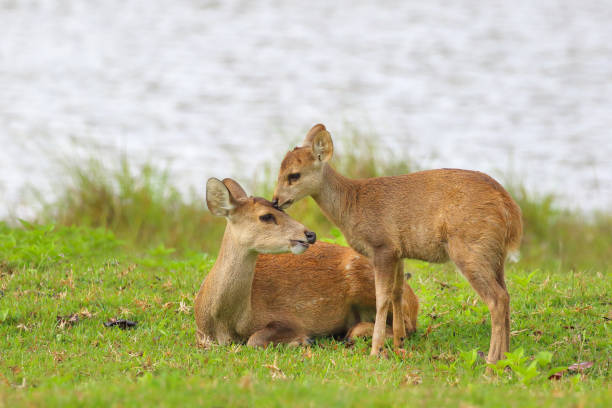
8. Predators
In their native range, Chinese Water Deer face predation from:
- Leopards
- Foxes
- Eagles (preying on young fawns)
- Humans (hunting for meat and habitat destruction)
In the UK, where there are fewer natural predators, their main threats include:
- Domestic dogs
- Foxes (mostly fawns)
- Automobiles
Their jumpy and watchful nature helps them avoid predators. They often run into thick plants or water when they feel threatened.
9. Adaptations
Chinese Water Deer have developed several remarkable adaptations:
- Tusk-like Canines: Male deer have long upper canines, or tusks, that they use as weapons during the rut.
- Great Swimmers: They enjoy water. It helps them avoid predators and find abundant underwater plants.
- Camouflaging Coat: Their fur provides natural concealment in dense undergrowth.
- High Reproductive Rate: Having many young helps more survive. This counters the risk of losing many juveniles.
Also, their solitary habits and night-time activity help them stay hidden in the wild.
10. Conservation Status
The IUCN Red List currently classifies the Chinese Water Deer as Vulnerable due to:
- Shrinking habitat in native regions
- Agricultural expansion
- Hunting pressure
The UK’s introduced population has thrived and now counts in the thousands. Some conservationists see this population as crucial for the species’ survival, even though it’s not in their natural range.
In China and Korea, conservation efforts are focused on:
- Habitat preservation
- Captive breeding programs
- Legal protection measures
Education and awareness campaigns are also essential to reduce hunting and habitat encroachment.
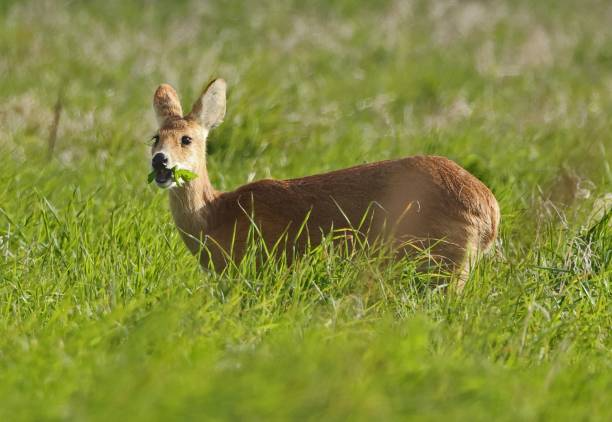
Conclusion
The Chinese Water Deer is a remarkable testament to nature’s knack for surprise and adaptation. This small, timid deer, with its distinctive tusks, plays a vital role in wetland ecosystems. Its remarkable journey from the marshes of China to the meadows of England showcases its resilience and ability to thrive in new environments.
As we turn our attention to conservation efforts, this extraordinary deer serves as a poignant reminder of the importance of protecting biodiversity everywhere. The survival story of the Chinese Water Deer is truly captivating, drawing the interest of biologists, conservationists, and wildlife enthusiasts alike.
So, if you find yourself wandering through the misty reed beds of Norfolk or along the banks of the Yangtze River, keep your eyes peeled. A quick glimpse of yellow-brown fur and those shining tusks might just mean you’ve encountered one of nature’s most elusive creatures.

